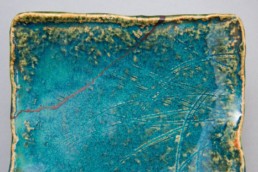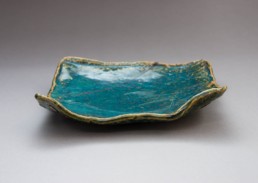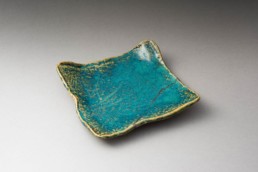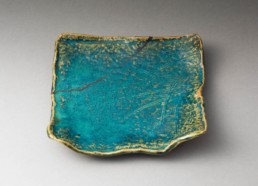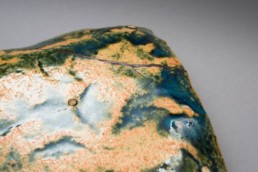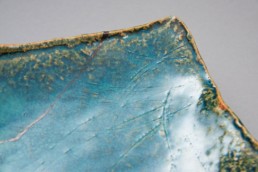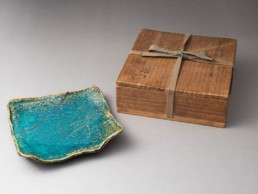A Cobalt Blue Plate with Kintsugi by Kitaoji Rosanjin (1883 – 1959)
Artist:Kitaoji RosanjinEra:Taisho/ ShowaPrice:SoldInquire:info@shirakuragallery.com
One of the most important Japanese potters of the 20th century, skilled in an impressive number of styles, today his pieces can be found in museum collections around the world. The kintsugi used here was recently reapplied by a top artisan and uses copper, which, with age should display a blueish color to complement the cobalt blue of the dish.
Born the second son of the head priest of Kamigamo Shrine in the north of Kyoto (very close to our gallery), Kitaoji Rosanjin (1883-1959) is one the few genuine polymaths of Japanese art. Starting his first apprenticeship at the age of six with a woodblock engraver, later he would move to Tokyo to study calligraphy. Excelling in his study and practice, he would eventually be accepted to study under noted calligrapher Okamoto Ippei, launching him into a career in the arts. After spending some time back in Kyoto and Kanazawa, Rosanjin settled on the two areas he would focus his efforts on, food and ceramics. He felt that to be a good potter it was necessary to have a keen awareness of the implements used in the culinary world. In 1926, with the help of Toyota Arakawa, he opened his first kiln in Kamakura and not long after, started producing dinnerware ceramics in as many styles as he could master—no small feat considering most potters devoted their lives to only one style with varying success. Today he is remembered as a potter, a restauranteur, a calligrapher, painter, and engraver. Eventually he would earn Japan’s top honor of Living National Treasure for his tireless pursuit of beauty.
In fine antique condition, this masterfully crafted plate is 7.3 inches in length and width (18.5 cm) and stands 1.2 inches tall (3 cm). Rosanjin’s signature can be seen etched on the base and it comes housed in its original wood box signed and sealed by the artist. (Matching seals and signatures available upon request).
